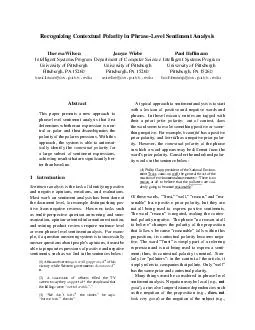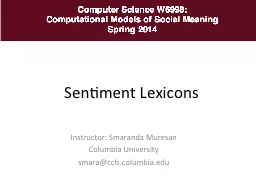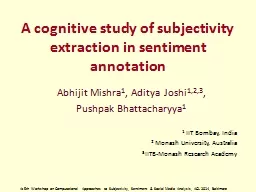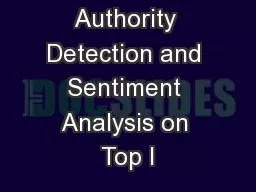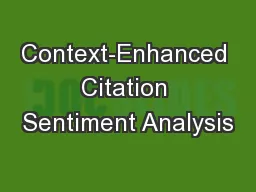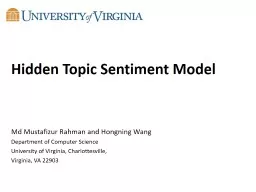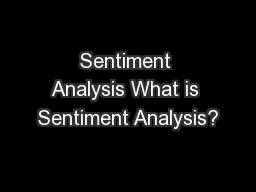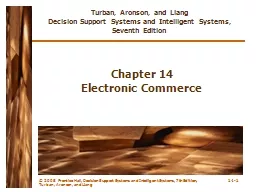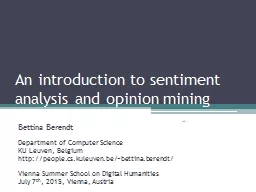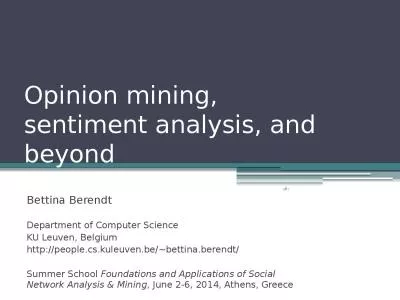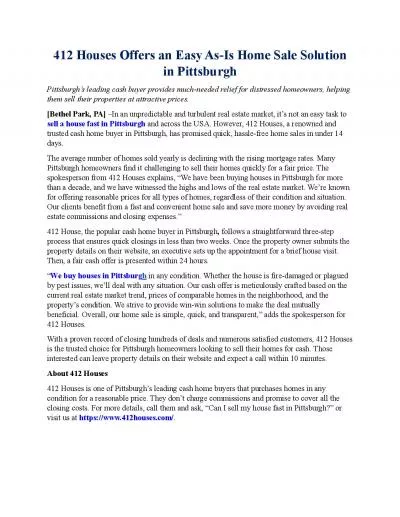PDF-Recognizing Contextual Polarity in PhraseLevel Sentiment Analysis Theresa Wilson Intelligent
Author : min-jolicoeur | Published Date : 2014-12-19
pittedu Janyce Wiebe Department of Computer Science University of Pittsburgh Pittsburgh PA 15260 wiebecspittedu Paul Hoffmann Intelligent Systems Program University
Presentation Embed Code
Download Presentation
Download Presentation The PPT/PDF document "Recognizing Contextual Polarity in Phras..." is the property of its rightful owner. Permission is granted to download and print the materials on this website for personal, non-commercial use only, and to display it on your personal computer provided you do not modify the materials and that you retain all copyright notices contained in the materials. By downloading content from our website, you accept the terms of this agreement.
Recognizing Contextual Polarity in PhraseLevel Sentiment Analysis Theresa Wilson Intelligent: Transcript
Download Rules Of Document
"Recognizing Contextual Polarity in PhraseLevel Sentiment Analysis Theresa Wilson Intelligent"The content belongs to its owner. You may download and print it for personal use, without modification, and keep all copyright notices. By downloading, you agree to these terms.
Related Documents

